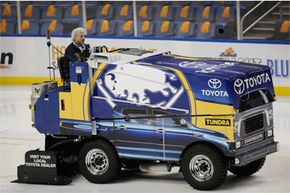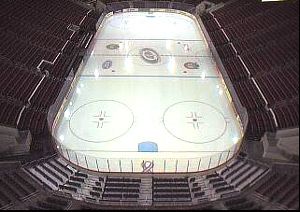Let's just assume that when Sarah Palin told People magazine in 2008 that she and her husband Todd had a long-held desire to name a child Zamboni, she was joking. Because if she was serious, the trademark issues might just be a nightmare.
So first things first: Zamboni is a brand. Generically, people should refer to the lumbering machines as "ice resurfacers" or "ice resurfacing machines." There are several brands on the market apart from Zamboni, including Resurfice Corp.'s Olympia brands. Zamboni owns a wide swath of the market share in the U.S., but Resurfice says it manufactures generally the same amount of machines (200 or so) a year [source: Branch].
Advertisement
The machines aren't cheap: The most inexpensive model (which is a small unit pulled by a tractor) is around $10,000, with the most expensive models in the low six figures, according to the Zamboni website. The cost is steep, but keep in mind each machine is custom-built and could take six months to ship out after ordering [source: Zamboni].
If you're itching to drive a Zamboni, good news: There's no special license or certification needed to rule the rink. Of course, on-the-job training is highly necessary, as the Zamboni isn't exactly made for the ultimate driving experience. In a 2009 profile, Car and Driver gave an account of the experience: "Visibility from the elevated left-rear position is poor, the abrupt throttle tip-in takes some getting used to, and the vague steering is totally '70s Cadillac."
So taking it out for a spin might not lull a crying baby. But skate away to the next page, where we'll head back to 1940s California and the birth of modern ice resurfacing.

